Wearable flexible electronic devices based on gesture recognition technology have significant application prospects in fields such as healthcare, robotics, human-computer interaction, and artificial intelligence. Developing high-performance flexible strain sensors is a crucial foundation for realizing high-performance wearable device applications. The sensitivity of the sensors determines the perception accuracy of wearable devices, while mechanical robustness under conditions such as overload, instantaneous impact, and multiple cycles of bending/twisting will affect the long-term reliable service of wearable devices in actual application environments. Currently, it is quite challenging to prepare flexible strain sensing materials that possess both high sensitivity and mechanical robustness using simple methods. How to promote the application of high-performance flexible strain sensors obtained from basic research into practical application scenarios such as human-computer interaction systems will provide new ideas for the development of such devices.
Recently, the research team from the Shenyang National Laboratory for Materials Science at the Institute of Metal Research, Chinese Academy of Sciences, based on previous studies of the mechanical behavior of flexible substrate metal films, proposed an academic idea of introducing the sensing mechanism of crack-type sensors into a highly mechanically robust serpentine structure based on the mechanical principles of flexible device sensing. By cleverly controlling the high/low resistance regions of the sensing layer, they developed a flexible strain sensor with sensitivity comparable to that of crack-type sensors (GF > 1000) and excellent mechanical robustness. This sensor exhibits outstanding cyclic stability under harsh environmental conditions such as overload, impact, underwater immersion, and high/low temperatures, with a stable response cycle reaching 10,000 cycles. Additionally, the sensor has advantages such as fast response and recovery times (< 58 ms) and low hysteresis.
The team further integrated the sensor into a self-designed wireless wearable human-computer interaction system, achieving real-time sign language translation functionality by combining machine learning, user interface design, and other technologies. The high sensitivity and response speed of the sensor endow the system with timely and accurate perception capabilities, while high mechanical robustness ensures the system’s long-term reliable service in practical application scenarios. The system utilizes machine learning classification algorithms to recognize 15 types of single gesture sign language and 6 types of combined gesture sign language (with recognition accuracies of 98.2% and 98.9%, respectively). The overall response time of the system is less than 1 second. This low-cost, lightweight, portable, and easy-to-operate system can translate sign language into speech in real-time and visualize signal curves and translation results through a customized user interface. In the future, by optimizing circuit design and expanding the gesture or sign language database of machine learning, this gesture recognition technology can be further applied to key scenarios such as human-computer interaction, virtual reality, gesture authentication, intelligent sensing, and healthcare. This research provides new ideas for achieving a stable enhancement mechanism under flexible conditions and is expected to promote the application and industrial development of wearable human-computer interaction systems. Furthermore, based on the long-term accumulation of basic research on the mechanical behavior of micro-scale materials and nano-metal layered composite materials, the team has developed nano-composite materials with ultra-long service life for micro-electromechanical systems (MEMS), which are expected to be applied in RF MEMS in fields such as aerospace, communications, navigation, and new energy.
The research results of the flexible strain sensor sign language recognition system were published online under the title Ultra-Robust and Sensitive Flexible Strain Sensor for Real-Time and Wearable Sign Language Translation in the journal Advanced Functional Materials. The research work was supported by the National Natural Science Foundation, the Institute of Metal Research’s “Introduction of Outstanding Scholars” project, the Shenyang National Laboratory for Materials Science’s youth talent and basic frontier and common key technology innovation projects. Researchers from Northeastern University participated in the study.
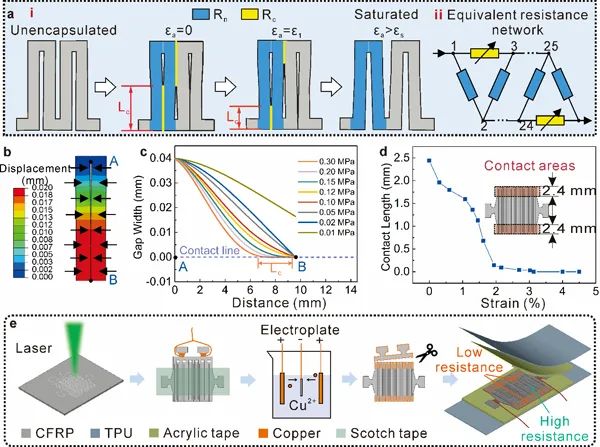
Figure 1. Design and fabrication of the flexible strain sensor. a. Sensing mechanism of the serpentine structure; b. Displacement cloud map of the sensing unit under surface shear stress; c. Distribution curve of the gap between adjacent serpentine stripes along the width of the sensor under different surface shear stresses; d. Curve of the contact area length of adjacent serpentine stripes as a function of strain; e. Schematic diagram of the sensor fabrication process.
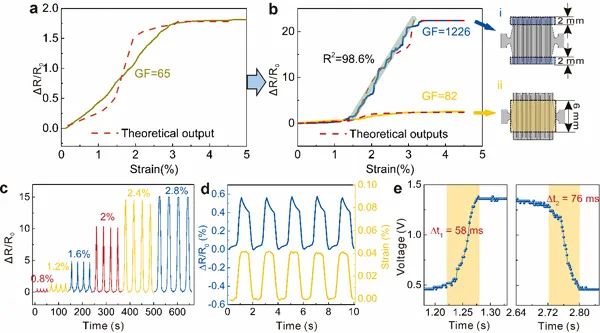
Figure 2. Sensing performance of the flexible strain sensor. a. Response curve before high/low resistance region control; b. Response curve after high/low resistance region control; c. Cyclic response curves under different peak strains, limit detection strain; d. Response and recovery times.
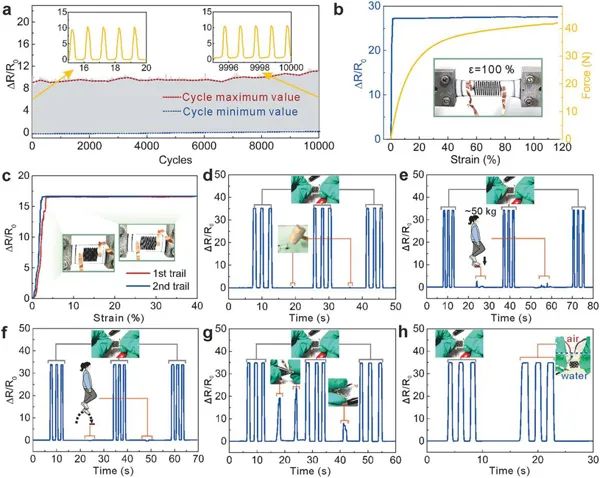
Figure 3. Mechanical robustness of the flexible strain sensor. a. Cyclic stability; b. Maximum tolerable strain; c-e: Resistance to harsh environments.
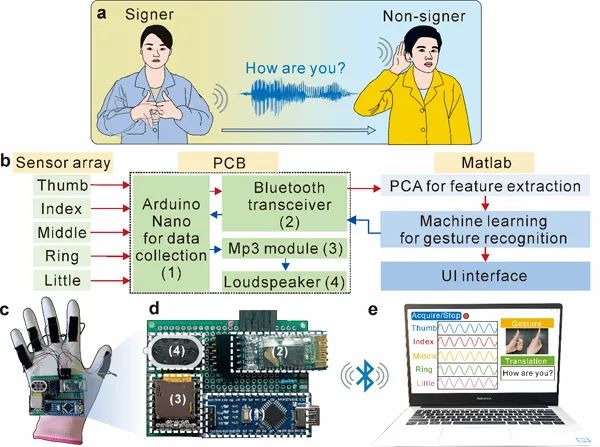
Figure 4. Wearable sign language translation system. a. Schematic diagram of application scenarios; b. System framework; c. Sign language gloves; d. Wireless circuit board; e. User interface.
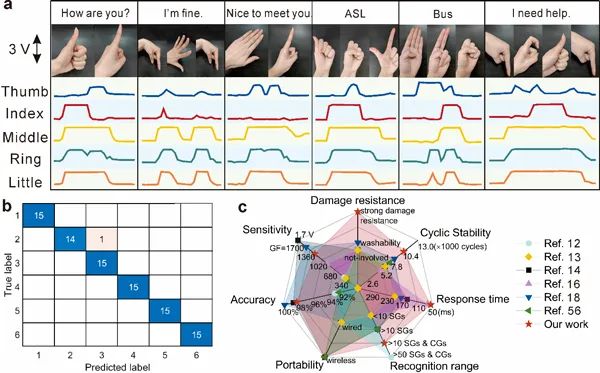
Figure 5. Sign language recognition validation. a. 6 types of sign language composed of combined gestures; b. Recognition accuracy of the sign language translation system for 6 types of sign language; e. Summary of various performance metrics of the sign language translation system.
Source: Institute of Metal Research, Chinese Academy of Sciences
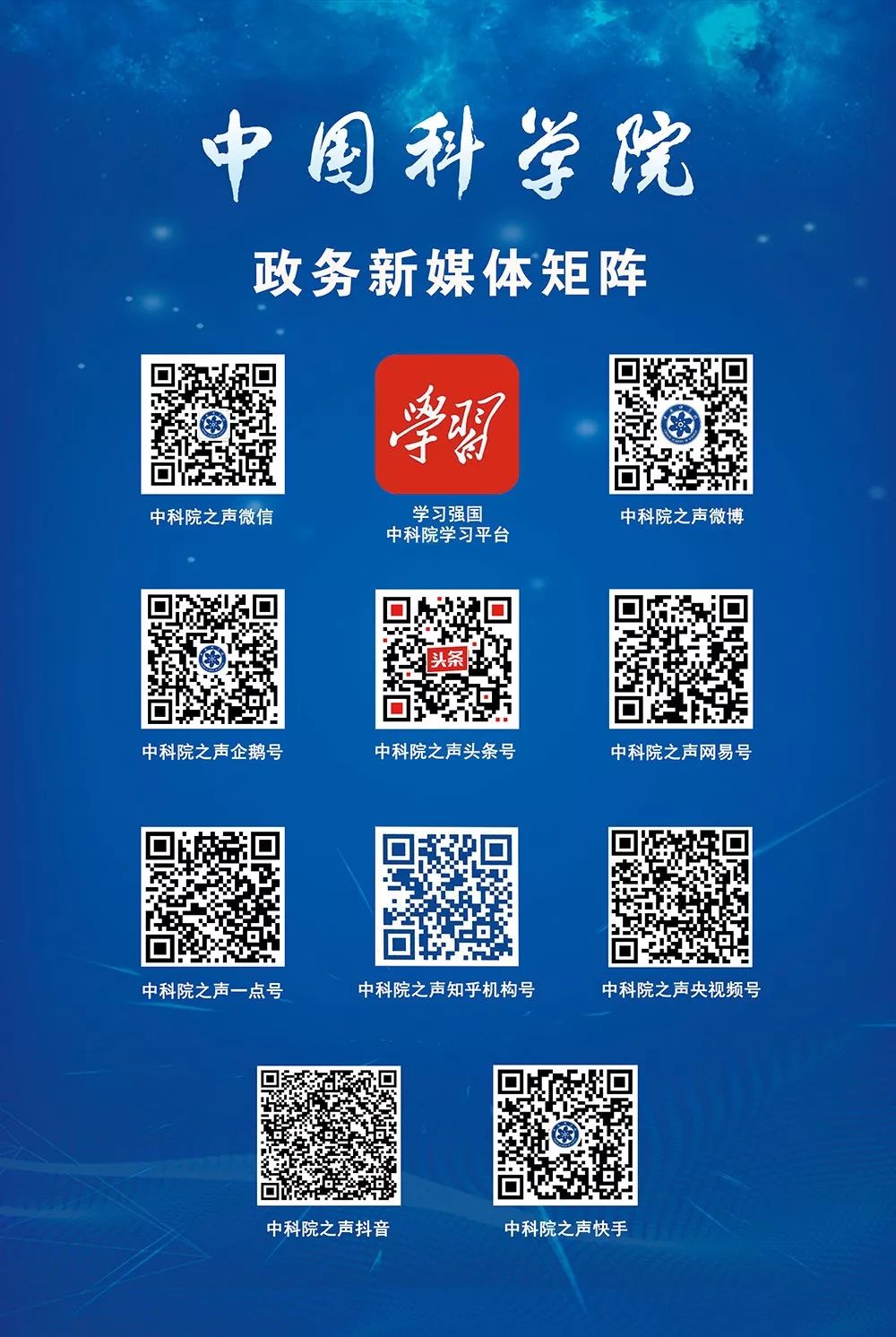
This account’s articles are defaulted to enable WeChat “Quick Reprint”.
Please indicate the source when reprinting.
For other channels, please contact us.